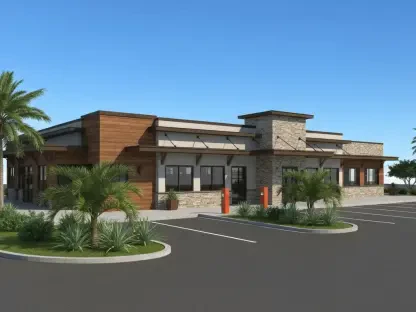In the wake of a traumatizing vehicle attack at the Lapu Lapu Day Festival in Vancouver, Canadian event organizers are reevaluating their security practices with renewed urgency. This incident, where an SUV was tragically driven into a crowd, caused widespread death and danger, revealing vulnerabilities in current safety protocols at public events. As a result, there is an intensified effort across Canada to enhance security, addressing both immediate and long-term concerns for public gatherings. The Canadian event planning community, driven by the gravity of these events, is reassessing its methodology to safeguard attendees while maintaining the celebratory essence of festivals. The need to bridge the gap between creating secure environments and preserving public enjoyment is now more critical than ever. This crisis has prompted regional and national responses, compelling officials and organizers alike to foster safer event spaces, ensuring robust emergency preparedness that accommodates a balance between security measures and the inherent joy of public celebrations.
Security Reassessment Across Canada
The tragic event in Vancouver spurred a deep reflection among event planners nationwide, urging them to address potential security inefficiencies. The Lapu Lapu Day Festival incident drove home the necessity for a comprehensive review of all safety measures to ensure they meet today’s challenges. As a consequence, organizers are compelled to brainstorm innovative strategies that assure public safety while accommodating the dynamic nature of such gatherings. This tragedy was a pivotal moment that exposed the urgent need for heightened vigilance and the implementation of more stringent, far-reaching security protocols. There is a resounding call for a fundamental rethink of existing systems, driven by the realization that previous methods do not suffice in the face of modern threats. The approach now is not just about responding to isolated incidents but developing a holistic and actionable security framework adaptable to various scenarios across the Canadian landscape.
The incident’s profound impact continues to reverberate through Canada’s event planning sectors with a shared focus on prevention and preparedness. British Columbia’s government officials have initiated concrete steps forward, highlighting the need for expert insight and public confidence. Premier David Eby’s decision to form an independent commission to scrutinize festival security practices is a testament to this commitment. Recognizing the vulnerabilities exposed, stakeholders are engaged in dialogue and action, aiming to reinforce public trust and demonstrate accountability. Meanwhile, event organizers have preemptively started revisiting these protocols in response to evolving insurance requirements and escalating security costs, recognizing the global trend towards more comprehensive safety measures. The discourse shaping this shift acknowledges that while the challenges are formidable, the ongoing evolution of security practices is imperative for ensuring future events are both secure and welcoming.
Government and Organizational Responses
Various initiatives by local governments further emphasize commitment to reshaping security strategies. In British Columbia, Premier David Eby’s timely intervention through commissioning an independent security protocol analysis exemplifies efforts to reassure residents. This commission aims to assess and refine safety measures across the region, instilling confidence and ensuring attendees feel secure during local festivities. Despite this political impetus, many organizers in British Columbia had already been proactive, prompted by burgeoning demands from insurance companies and a steady rise in associated safety costs. This momentum has been an acknowledgment of the growing need to engage in comprehensive evaluations capable of withstanding the pressures of modern security concerns. Continuous adaptation and commitment to identifying optimal security strategies underpin municipal and organizational responses to emerging threats, with each initiative uniquely prepared to address particular vulnerabilities.
Being anticipatory rather than purely reactive has shaped the responses of organizers who often find themselves at the frontlines of safety management. Event planners in cities like Victoria have proactively anticipated the need for enhanced protective measures by strengthening collaborations with local police and fire departments. Event organizers are now increasingly embedding security within initial planning stages, recognizing its centrality to their festival’s success. By incorporating diverse perspectives across safety management, they’re able to create more robust plans that incorporate all aspects, from vehicle barricades to emergency response services. This proactive stance exemplifies a growing consensus, reflecting widespread acceptance that safety is an integral component of event management. As planners face heightened security expenses, the burden is met with a resolve to innovate and instill preventative measures indispensable for producing successful, incident-free events.
Challenges of Risk Management
Despite proactive responses, organizers face numerous challenges in predicting and handling unforeseen incidents during large-scale events. Kelly Kurta, executive director of the Greater Victoria Festival Society, underscored the difficulty in anticipating every possible scenario, as evidenced by the recent Vancouver tragedy. She noted the dilemma of balancing effective risk management while preserving the ambiance that defines public events. Planners must navigate these complexities with care, ensuring that while threats are minimized, the essence and enjoyment at the core of gatherings are not diminished. The unpredictability of potential threats demands that planners remain vigilant and adaptable, crafting security measures that are both sufficiently flexible to accommodate changing dynamics and sufficiently stringent to deter criminal activity. The dual focus on maintaining safety without undermining festivity epitomizes the constant juggling act faced by event organizers striving to create secure yet lively experiences for attendees.
The daunting task of managing risk intermingles with financial considerations, imposing significant pressure on available budgets. The unforeseen nature of threats means event planners often allocate up to 75% of funds towards various rigorous risk management strategies. This financial emphasis attests to the centrality of security within the overall event framework, encompassing police presence, fire department involvement, and the hiring of private security and medical staff. These expenditures, although high, are increasingly recognized as vital investments in public safety. The conundrum remains in how to sustainably manage these rising costs while ensuring event accessibility and enjoyment. Organizers must now adopt creative approaches to optimize spending, leverage community partnerships, and seek innovative solutions to balance security priorities with financial realities, thus continuing to produce cherished cultural celebrations that respect safety imperatives.
Local Efforts in Security Enhancements
Specific local responses illustrate the different approaches taken to improve event safety following the Vancouver incident. In Victoria, extensive discussions with local law enforcement agencies have ensured the security framework is detailed and actionable for upcoming celebrations. Organizers have been reaching out to police and fire departments to identify potential enhancements to existing plans. This could involve increasing the number and strategic placement of vehicle barriers to prevent unauthorized access. There is an immense focus on collaboration at each operational level to ensure that all vantage points are covered, and that every potential risk is methodically mitigated. By establishing these extensive networks, organizers reinforce a community-centric approach to safety, embedding security as a natural complement to any event. Such robustness is becoming increasingly critical as the interconnected nature of security planning evolves with emerging threats.
These efforts highlight significant economic considerations as security budgets become a considerable expense for Canadian event organizers. A substantial portion of Victoria’s festival budgets is dedicated to thorough risk management, illustrating the sizable financial burden involved. Costs cover extensive resources, including law enforcement, private security providers, and medical services personnel. These investments reflect a necessity to shield attendees from risks, an ever-present concern amongst festival organizers. Despite these financial incentives imposing constraints that influence festival operations, there is a collective drive to address these expenses pragmatically without compromising quality. The expense of increased security measures is seen not as prohibitive but as essential, promoting safety while ensuring the enduring success of culturally and socially significant public gatherings. Multilayered security becomes synonymous with the integrity and value attributed to these celebrated events across the country.
Collaborative Efforts and Nationwide Implications
The collective shift in addressing event security extends beyond local efforts and finds representation on a national scale. For instance, the city of Toronto has spearheaded collaborative measures by organizing a Festival Safety Summit, set to refine safety strategies further and spark dialogue on national best practices. This summit reflects an overarching desire within the country to standardize security protocols, ultimately fostering cohesive, strategic approaches to managing public events. By bringing together experts and stakeholders from varying sectors, the summit seeks to explore enhanced methodologies that proactively address evolving concerns. This underscores a unified effort across provinces to build an intelligible and consistent framework, mitigating the risks highlighted by the Vancouver attack and shaping the future of event planning in Canada. Nationwide collaboration becomes instrumental in forging an environment where security measures reflect shared priorities and trust as foundational elements in comprehensive planning.
Supporting these endeavors is Toronto’s Special Events Stabilization Initiative, a program designed to assist festival organizers with health, safety, and security expenditure. This initiative outlines specific provisions such as hostile vehicle mitigation techniques to deter potential threats. As these measures progress, ongoing funding aims to cement these initiatives till at least 2027, helping communities to organize and enjoy iconic outdoor events safely. The structure and intent behind this initiative articulate the recognition of increased vulnerabilities in public spaces and signify commitment towards expanding protective measures. Enacting these tactics prompts municipalities across Canada to reevaluate their own protocols, fostering an environment steeped in security consciousness and diligent planning. Together, events are not only safeguarded but imbued with a renewed sense of celebratory assurance, ensuring the vibrancy and resilience of community festivals across diverse Canadian settings.
Balancing Safety and Feasibility
In light of the harrowing vehicle attack at Vancouver’s Lapu Lapu Day Festival, Canadian event planners are urgently reassessing their security strategies. The incident, where an SUV was alarmingly driven into a crowd, resulted in significant fatalities and injuries, exposing weaknesses in existing safety measures at public gatherings. Consequently, there’s a vigorous nationwide push to bolster security, addressing both immediate threats and long-term safety concerns for such events. Motivated by the seriousness of the situation, the Canadian event planning sector is reevaluating its approach to protect attendees while keeping the joy of festivals intact. The challenge now is to harmonize secure environments with the public’s enjoyment, a task more pressing than ever. This crisis has sparked regional and national initiatives, pushing officials and organizers to create safer event spaces, focusing on comprehensive emergency preparations that strike a balance between essential security protocols and the celebratory spirit of public gatherings.









